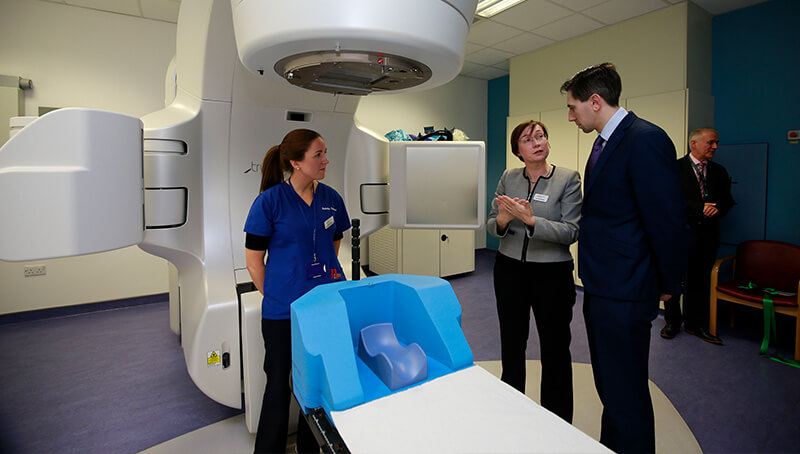Two new linear accelerators have been installed at St Luke’s Radiation Oncology Network (SLRON).

The network now has 14 radiotherapy machines with a total capacity to treat over 400 patients per day, making it one of the largest radiotherapy treatment centres in Europe.
The new LINACS provide faster treatment and state of the art specialist radiotherapy services. They will each treat an average of 30 patients per day. Enhanced patient imaging facilities will ensure accuracy in delivery of treatment and they have the capability to deliver treatment in time with the patient’s breathing cycle, improving the accuracy of treatment for moving lung tumours and upper abdominal tumours.
The new €7.5m instalment will meet Ireland’s radiotherapy treatment needs for the next three years, based on current estimates of patient numbers.
Linacs are used to provide treatment for the majority (over 90%) of patients undergoing radiotherapy in Ireland. Linacs target a tumour’s shape and destroy cancer cells while sparing surrounding normal tissue.
The new state-of-the-art machines include features such as:
- Enhanced patient imaging facilities to ensure accuracy in delivery of treatment;
- A very fast treatment delivery mode;
- The capability to deliver treatment in time with the patient’s breathing cycle, improving the accuracy of treatment for moving lung tumours and upper abdominal tumours
These new features allow SLRON to expand the range of services offered to patients and provide the opportunity to further ‘freeze’ the motion of moving tumours, allowing an unprecedented accuracy in treatment. The additional features also allow SLRON to increase the number of international clinical trials it can participate in, further improving the service provided to patients.
Network Director of St Luke’s Radiation Oncology Network, Dr Orla McArdle, said, “Our staff have become experts in the delivery of complex radiotherapy treatments not previously available in the Irish health service thanks to state-of-the art equipment such as these machines. Our clinicians and staff recognise that technology and medical treatments for cancer are evolving at a very rapid rate and keeping pace with these developments is key to effectively treating patients and increasing survival rates.”

